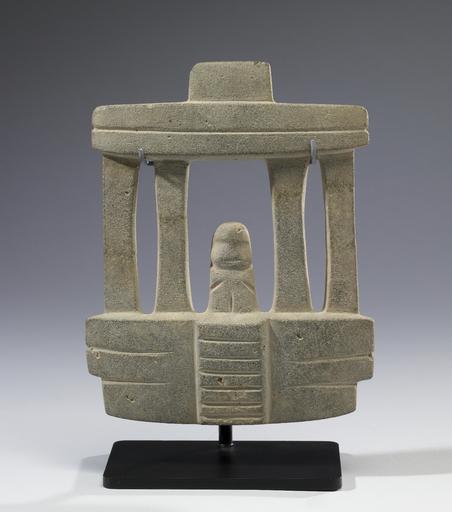MAKE A MEME
View Large Image

| View Original: | Mezcala_-_Temple_Model_-_Walters_2009204.jpg (1589x1800) | |||
| Download: | Original | Medium | Small | Thumb |
| Courtesy of: | commons.wikimedia.org | More Like This | ||
| Keywords: Mezcala - Temple Model - Walters 2009204.jpg The Mezcala sculptural style of Guerrero emphasizes geometric abstraction in both human figures and architectural models Few examples have been found in their original context and thus the function meaning and even the length of time during which the style was in use remain ill defined Contributing to the question of chronology is the fact that other Mesoamerican peoples from the latter centuries of the Late Formative to the Late Postclassic periods 200-1500 CE acquired and preserved these works as heirlooms They have been found at sites throughout Mexico and large numbers were excavated from ritual caches in the Templo Mayor the main temple of the fifteenth-century Mexica Aztecs of Tenochtitlan Mexico City In the twentieth century the minimalistic Mezcala artworks fascinated the Mexican artist and cultural historian Miguel Covarrubias who compared them favorably to other sculptural traditions such as the celebrated Cycladic style of ancient Greece This example features the typical Mezcala four-columned structure atop a pyramidal platform articulated by apron-moldings on the uppermost tier A central staircase leads into the structure at the midpoint between the columns A lone figure stands between the columns and inside the structure No buildings of this type have survived in Guerrero however which leaves open the question of whether this carving faithfully represents the architectural traditions of the region during the Formative and Classic periods 300 BC-AD 500 Terminal Formative-Early Classic stone cm 19 4 15 5 2 accession number 2009 20 4 80159 Michael Robins date and mode of acquisition unknown John G Bourne 1990s by purchase Walters Art Museum Gift of John Bourne 2009 place of origin Central Río Balsas area Walters Art Museum license Mexican Pre-Columbian art in the Walters Art Museum Mezcala stone artefacts Media contributed by the Walters Art Museum needs category review | ||||